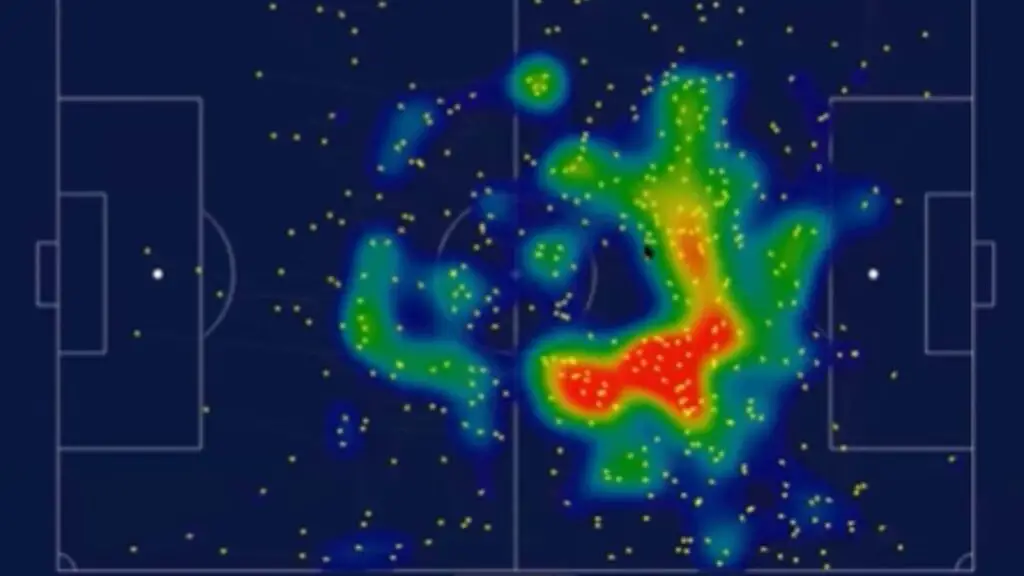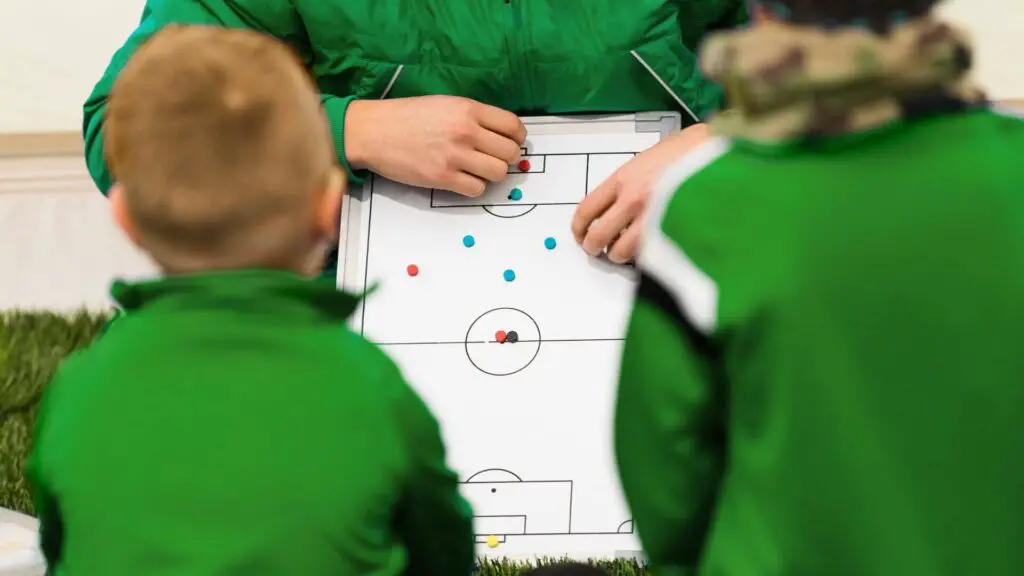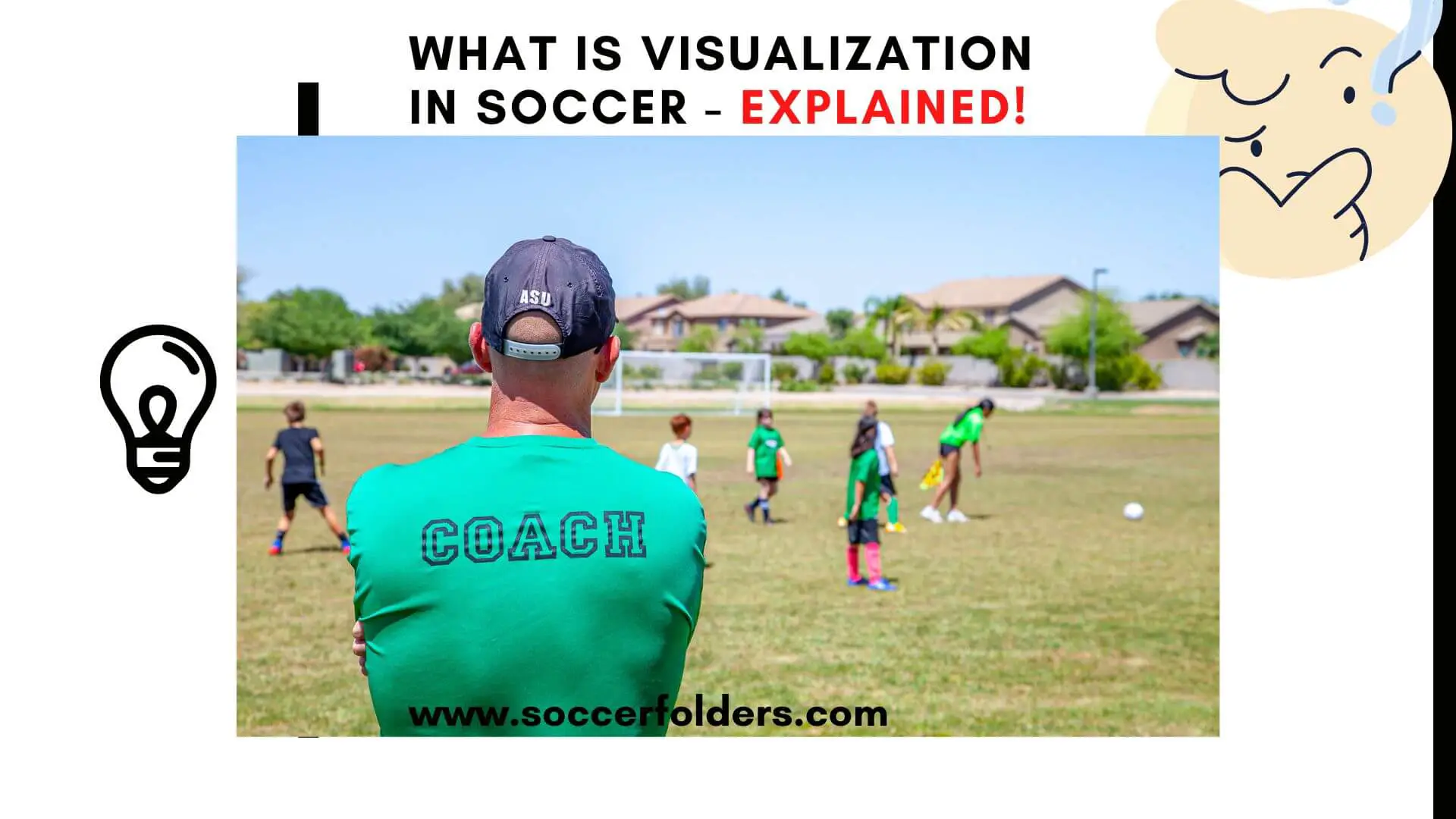What is visualization in soccer?
First things first, Soccer, or football as it is known in many parts of the world, is a complex and dynamic sport that requires a deep understanding of both individual and team performance.
With so many variables in play, it can be difficult for players and coaches to gain a clear understanding of what is happening on the field and how to improve. This is where visualization comes in.
This article will be divided into two sections: First, you will learn about visualization as a way to improve the mental performance of soccer players. Then, visualization, as a powerful tool to understand and analyse the game.
Let’s get started.
Quick Navigation
- What Is Visualization In Soccer?
- First Part: Visualization In A Mental Way
- Second Part: Visualization As Visual Aids To Analyse The Game
- The Use Of Visualization For Match Preparation And Scouting Of Opponents
- Role Of Visualization In Player Development And Training
- Impact Of Visualization On Team Dynamics And Communication
- Impact Of Visualization On Decision-Making During The game ( in-game adjustments)
- Final Thoughts
What Is Visualization In Soccer?
Visualization in soccer is the use of mental imagery or mental rehearsal by soccer players to improve their performance. It can also refer to the use of visual aids, such as diagrams or animations, to help players and coaches understand and analyze various aspects of the game, such as tactics, formations, and individual and team performance.
Those visual aids include things like heat maps of player movement, passing networks, and shot charts. The goal is to provide a clear, easily understandable representation of the data, which can be used to identify patterns and make informed decisions.
Let’s start with the first part of this article, which is about visualization as a mental tool for soccer players.
First Part: Visualization In A Mental Way
Visualization can be used to improve the mental performance of soccer players.
It can help players develop a deeper understanding of their own strengths and weaknesses, as well as those of the opposing team.
Visualization can also be used to help players prepare for specific situations that may arise during a game, such as taking a penalty kick or defending against a free kick, skilful forwards, etc.
By visualizing themselves successfully executing specific actions or strategies, players can improve their confidence and focus, which can lead to better performance on the field.
This technique is known as mental imagery or mental rehearsal, and it has been widely used by athletes in various sports to improve their performance.
Additionally, visualization can also help players recover from injuries, by allowing them to visualize themselves returning to the game and performing at their best. This can help to reduce anxiety and fear and accelerate the healing process.
So, by using visualization techniques such as mental imagery or mental rehearsal, you can develop a deeper understanding of your own strengths and weaknesses, prepare for specific situations that may arise during a game, and recover from injuries.
Want to take your mental game to the next level? Check out our e-book, “Mental Training Techniques for Soccer Players“. Whether you’re a beginner or a seasoned player, this e-book will provide you with the tools you need to improve your mental game and become a better soccer player.
Now let’s talk about visualization as a powerful tool for understanding and analysing the game.
Second Part: Visualization As Visual Aids To Analyse The Game
Benefits Of Visualization In Soccer
One of the key benefits of visualization in soccer is that it allows coaches and players to quickly identify areas where they are excelling and where they need to improve.
For example, a heat map of a player’s movement during a game can reveal where they are spending most of their time on the field and where they are most effective.

This information can then be used to make adjustments to the player’s role or position on the field.
Another benefit of visualization is that it can help coaches and players understand how different tactical decisions and formations affect the game.
For example, a passing network can show how the ball is moving through the team and which players are playing the most important role in this movement.
This information can be used to make adjustments to the team’s formation or tactics, which can have a big impact on their performance.
Visualization can also be used to help individual players improve their performance.
For example, a shot chart can show a player where they are most likely to score goals, and where they need to improve.
This information can then be used to develop a training plan that will help the player improve their skills in these areas.
==>>You can also read about the mental toughness in soccer.
Impact Of Data and Technology on Visualization in Soccer
The impact of data and technology on visualization in soccer has been significant in recent years.
With the increasing availability of data and technology, it has become easier and more cost-effective to collect and analyze large amounts of data, which has led to a greater understanding of the game.
This has made visualization more accessible and useful for coaches, players, and analysts.
Today, a wide variety of data and technology, including tracking systems, cameras, and machine learning algorithms, are used to collect and analyze data from soccer matches.
This data can then be used to create visual aids, such as heat maps, passing networks, and shot charts, which provide a clear and easily understandable representation of the data. This can then be used to identify patterns and make informed decisions about how to improve performance.
Additionally, the data and technology advancements also allow for better post-match analysis, player development and match preparation.
This has made visualization an essential tool for coaches and analysts who want to gain a deeper understanding of the game and improve performance.
The Use Of Visualization For Match Preparation And Scouting Of Opponents

The use of visualization for match preparation and scouting of opponents is a crucial aspect of soccer.
By analyzing the data of opposing teams, coaches and players can gain a deeper understanding of their strengths, weaknesses, and playing style.
Visualization tools, such as heat maps, passing networks and shot charts, can be used to study the patterns of play of opposing teams and identify potential weaknesses to exploit.
This information can then be used to develop specific tactics and strategies for the upcoming match, as well as to prepare individual players for the roles they will be expected to play.
This can give teams a significant advantage by allowing them to be better prepared and more confident going into the match.
Role Of Visualization In Player Development And Training
The role of visualization in player development and training is an important element for both individual players and coaches.
By analyzing performance data, coaches can identify areas where players need to improve and develop targeted training plans to help them reach their full potential.
Once again, Visualization tools such as heat maps, passing networks and shot charts, can be used to analyze players’ movements and actions on the field and to identify patterns in their performance.
Then, they will use this data to create personalized training regimes that focus on specific skills, such as ball control or passing accuracy.
Furthermore, visualization can also be used to track the progress of players over time and evaluate the effectiveness of their training.
By providing players with clear and visual feedback, visualization can help them understand where they are excelling and where they need to improve, which can lead to more efficient and effective training.
Impact Of Visualization On Team Dynamics And Communication
Visualization tools, such as heat maps, passing networks, and shot charts, can be used to analyze the performance of teams and help you understand how different tactical decisions and formations affect the game.
Once you have this information, it can be used to improve your team cohesion and communication by highlighting areas where players are working well together and where they need to improve.
Furthermore, visualization can also be used as a tool for post-match debriefing and analysis, allowing you and your teammates to review the game and discuss what worked well and what needs to be improved.
This can lead to a better understanding of the team’s strengths and weaknesses, which can help to foster a more cohesive and effective team.
Additionally, visualization can also be used as an educational tool to improve the understanding of the game and strategies among the players, which can lead to better communication and decision-making during the game.
Impact Of Visualization On Decision-Making During The game ( in-game adjustments)
The impact of visualization on decision-making during the game is significant.
By providing coaches and players with real-time data and visual aids, visualization can help them make informed decisions during the game.
For example, by analyzing the data in real time, coaches can make adjustments to the team’s formation or tactics based on the performance of the opposing team.
Similarly, players can use visual aids to understand their performance and make adjustments to their play during the game.
This can lead to better decision-making and more effective in-game adjustments.
Final Thoughts
visualization is a powerful tool that can help coaches and players understand and analyze various aspects of the game and make informed decisions.
It allows coaches and players to quickly identify areas where they are excelling and where they need to improve, understand how different tactical decisions and formations affect the game and help individual players improve their performance.
With the increasing availability of data and technology, visualization is becoming an essential part of the game.
However, visualization can also be used for mental preparation, injury recovery and in-game adjustments.
Hope you have gained value from this article.

